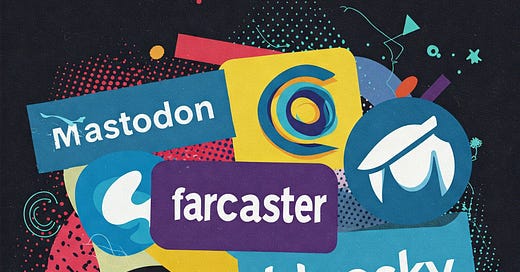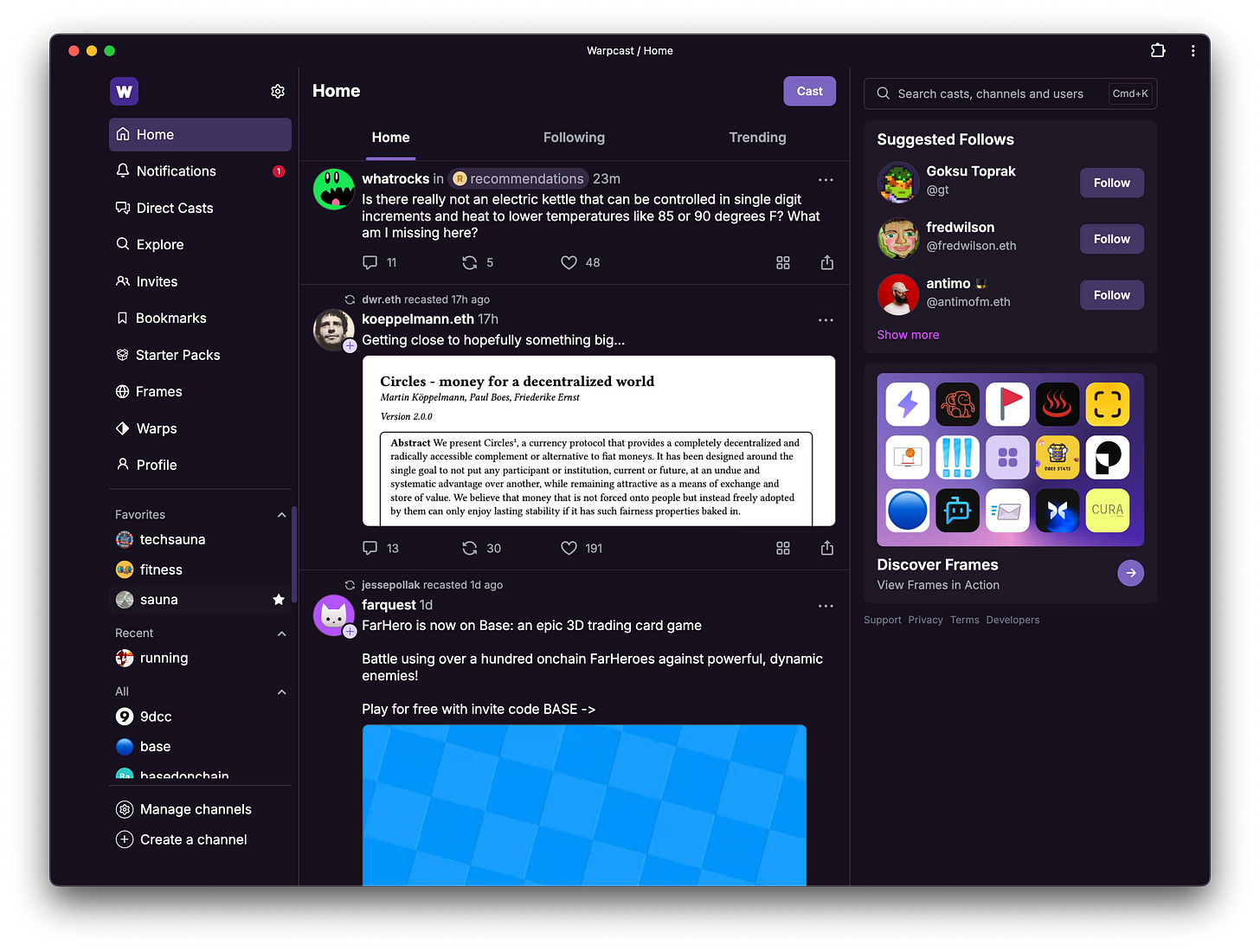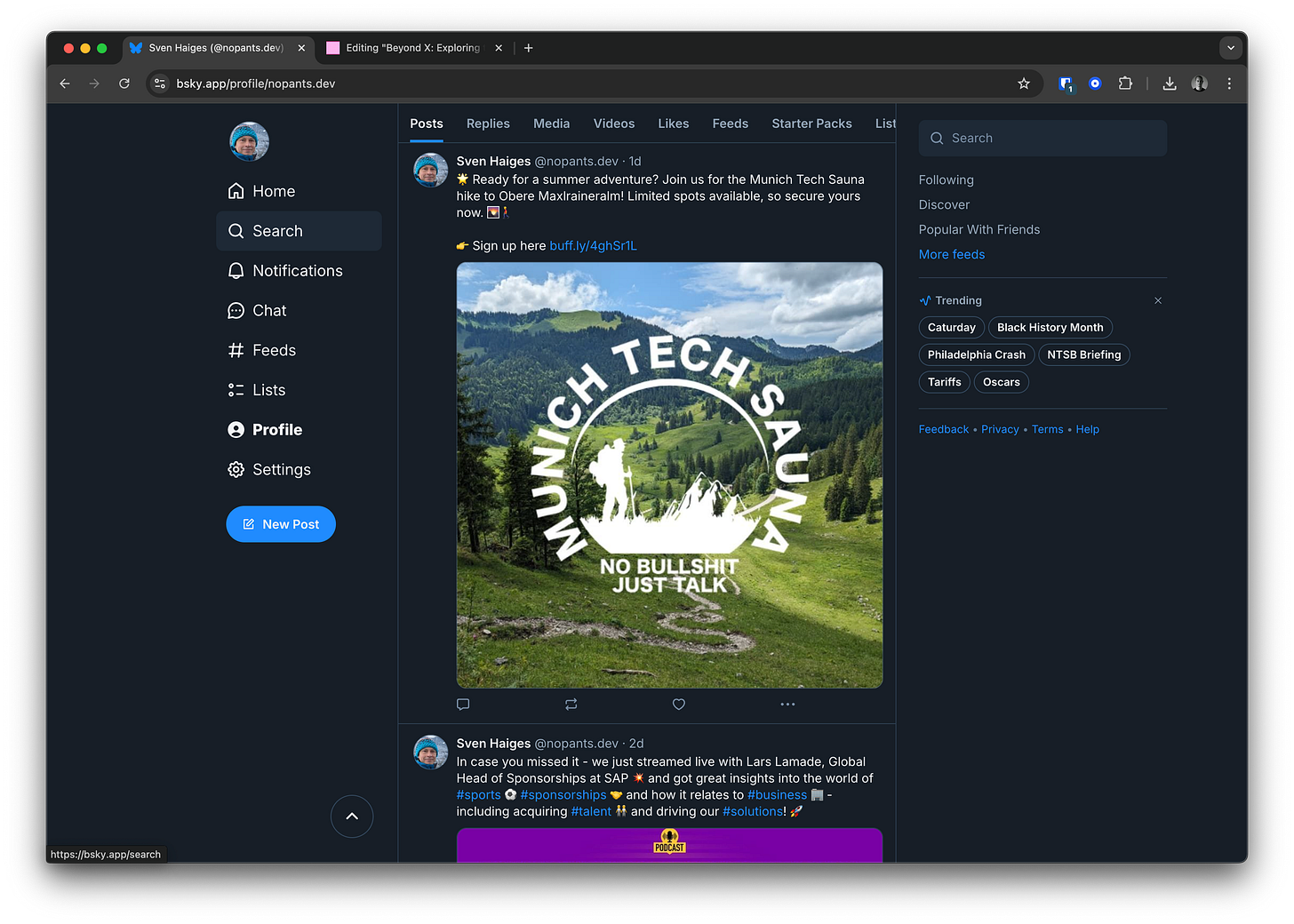Beyond X: Exploring the Future of Social Media
Exploring Decentralized, Community-Driven Platforms
Over the next few weeks, I'm diving into the world of social media beyond X (formerly Twitter). I'll be exploring a handful of platforms that have caught my eye: Mastodon, Farcaster, Bluesky, Rodeo, and Zora. Some you might know, others might be completely new. Join me as I share my experiences and learn about these emerging networks.
I encourage you to create accounts on these platforms and connect with me! Let's explore together. Some of these platforms are Web3-focused, so having a Web3 wallet like Coinbase Wallet is a good idea. Sometimes you might need a bit of crypto, too. For small amounts you can easily use the Coinbase Exchange - just sign up - and then add a bit of crypto as you go!
What's Wrong with Current Social Media?
Traditional social media platforms like X, Facebook, and Instagram operate under centralized control, giving a single company—and often a single individual—the power to dictate the rules. It's even more concerning that these individuals, like Mark Zuckerberg and Elon Musk, often represent a very narrow demographic (white men).
We've witnessed how these rules can shift, particularly regarding fake news, hate speech, and content filtering. While the impact might be subtle for some, these changes can pose significant threats to those outside mainstream groups (non white men, LGBTQI+, immigrants, just to name a few).
Just look at these news stories:
Racism, misogyny, lies: how did X become so full of hatred?
Meta says it will end fact-checking as Silicon Valley prepares for Trump
On top, centralization also often comes with monetization through ads, often at the expense of user experience and privacy. These platforms profit from our data, shaping what we see and influencing our behavior. Creators are forced to participate in this ad-driven system, their content interspersed with manipulative promotions.
I believe there's a better way – a fairer, more transparent approach to social networking that prioritizes users and creators over profit.
Let’s get started…
Here's a quick overview of each social network I will look at. Keep in mind I am also learning as we go. While I am a regular user to most of the social networks below, I will dive deep into these in my upcoming posts… excellent time to subscribe!
Mastodon
Think Twitter, but decentralized. It's spread across interconnected servers called instances, putting community ownership and control front and center. So the keywords here are Decentralized, but also Open Source, and Federated. Federation means that some servers will share their posts with others and interconnect - that’s also why a typical mastodon username looks something like @hansamann@chaos.social (@username @server). If you are just adressing someone on the same server, you can drop the @server part. Mastodon uses ActivityPub, which is a decentralized social networking protocol. It provides a standard way for different social media platforms (or servers, in ActivityPub terms) to communicate with each other, forming the federated network. Think of it like email – different email providers can seamlessly exchange messages because they follow shared protocols.
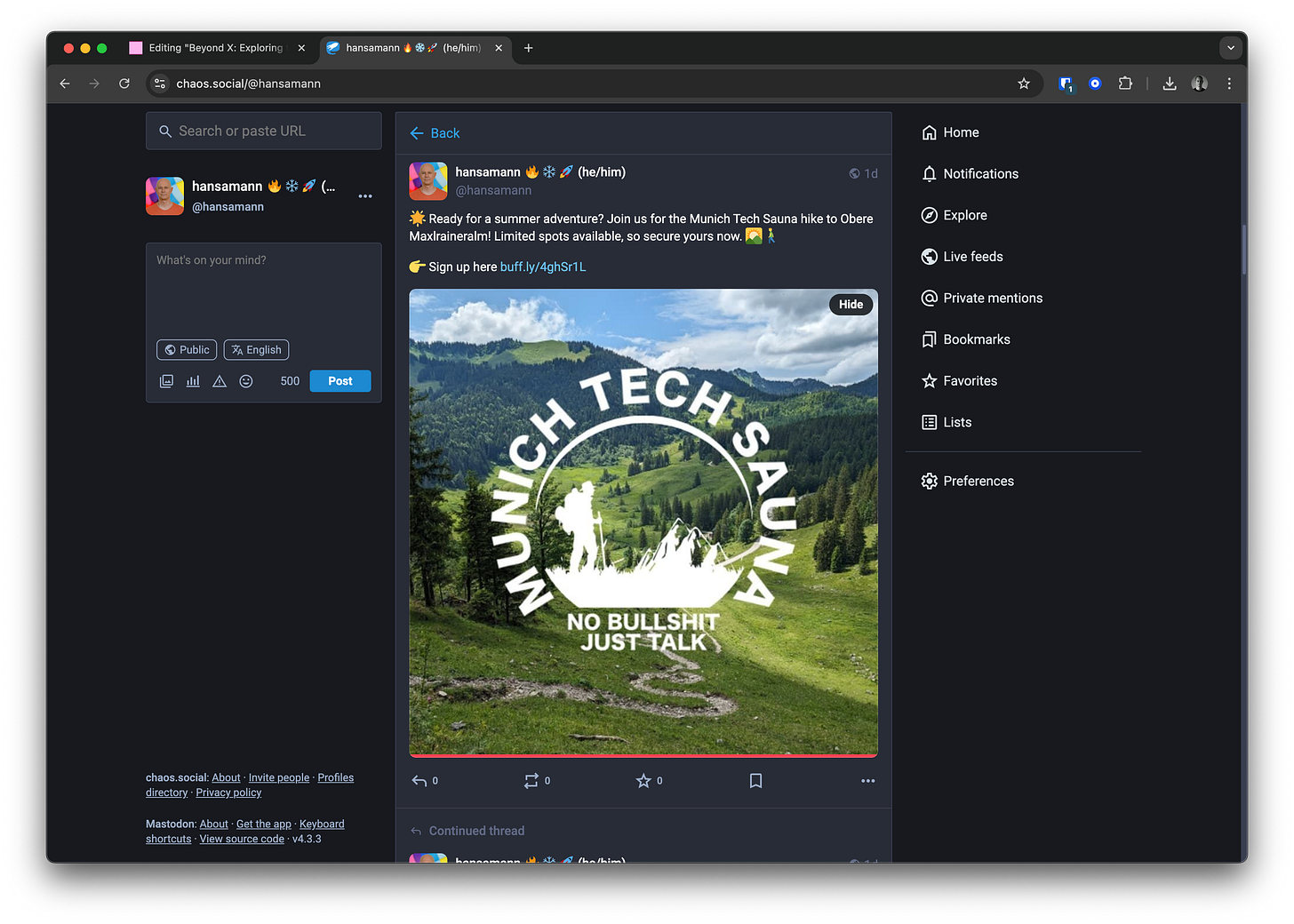
To get started, you first choose an instance - mine is chaos.social for example. I would recommend to read through the rules and values of that instance first. Also make sure you understand how the instance is being funded - most run on donations for example and it would be a good idea to make a donation after you used it for some time.
Farcaster
Farcaster is a decentralized social network built on a unique hybrid architecture. While often used interchangeably with its most popular client, Warpcast, Farcaster is actually a protocol for building decentralized social apps on Optimism, a layer-two scaling solution for the Ethereum blockchain. Founded by former Coinbase employees (Dan Romero and Varun Srinivasan), Farcaster stores user identity on-chain for security and permanence, while keeping interactions and posts off-chain for efficiency.
Warpcast, the go-to Farcaster client, requires a small annual fee ($5) to deter bots. Sending messages ("casts") also incurs a nominal cost to cover storage, though a small initial purchase covers a substantial volume of activity for posts, reactions and follows.
One of Farcaster's most exciting features is "Frames," mini-apps that run directly within the social feed. This allows for dynamic interactions, including minting NFTs and other blockchain-based activities, directly within the platform. While technically complex, Frames offer significant potential for innovation in social interaction.
Once you signed up, connect with me here!
Bluesky
Bluesky (which now has more than 30 million users), developed by the creators of Twitter, offers a decentralized social media experience built on the AT Protocol. It aims to give users more control over their data and the algorithms that shape their feeds. Like Farcaster (and Mastodon with the ActivityPub protocol), Bluesky separates its core protocol from the client applications that users interact with. This allows for multiple clients to be developed, fostering innovation and choice.
Currently, the primary way to access Bluesky is through their official app, also called Bluesky. Unlike Farcaster's paid model, Bluesky is free to use. While you can specify a different “provider” when signing up, most users will probably be at their main provider, which - currently at least - results in a bit more centralization. The platform emphasizes open conversation and community building, aiming to recapture the best aspects of early Twitter while addressing its limitations.
In recent news, you might have heard of “Free Our Feeds”. It’s a fundraising campaign to try and keep Bluesky out of the hands of billionaires such as Elon Musk. While not initiated by Bluesky themselves, the Bluesky team is supportive of this campaign.
Once you're in, connect with me on Bluesky!
Rodeo
Rodeo is aquite new social network focused on visual storytelling and community. It’s designed for artists and creators to share their work and uniquely incorporates NFTs Non Fungible Tokens), allowing creators to earn crypto when their posts are collected by other users. The platform aims to foster a supportive community where both creators and those who promote their work are rewarded. Users can connect using their Instagram or Warpcast accounts, or via invite code. The platform offers features similar to other social media sites but with built-in financial incentives for creative content.
The rewards on Rodeo are distributed from the minting fee when a post is collected. The creator of the post receives 50%, the collector who influenced the minting receives 25%, and Rodeo receives 25%. Collectors can earn rewards for helping others discover content. With 25% being received by Rodeo as the platform, they have a built in business model that scales as users grow. What I like in particular about this, is that there might be no need to monetize the platform with other means such as selling ads or data of the users.
Join me on Rodeo and collect some of my posts - once posted they can be collected for 24h, later than that you can make offers to existing collectors. There are some great digital artists like eboy on this platform, who’s art you should have a look at!
Zora
Zora is a decentralized social network built on the Ethereum blockchain, enabling creators to mint and sell NFTs of their content, fostering direct engagement with their audience, and earning cryptocurrency rewards. It’s quite similar to Rodeo, but I think it’s clearly the more mature platform and also comes with they own L2 blockchain, the Zora network. Zora Network is built on the Optimism Collective's open-source OP Stack, built on top of Ethereum.
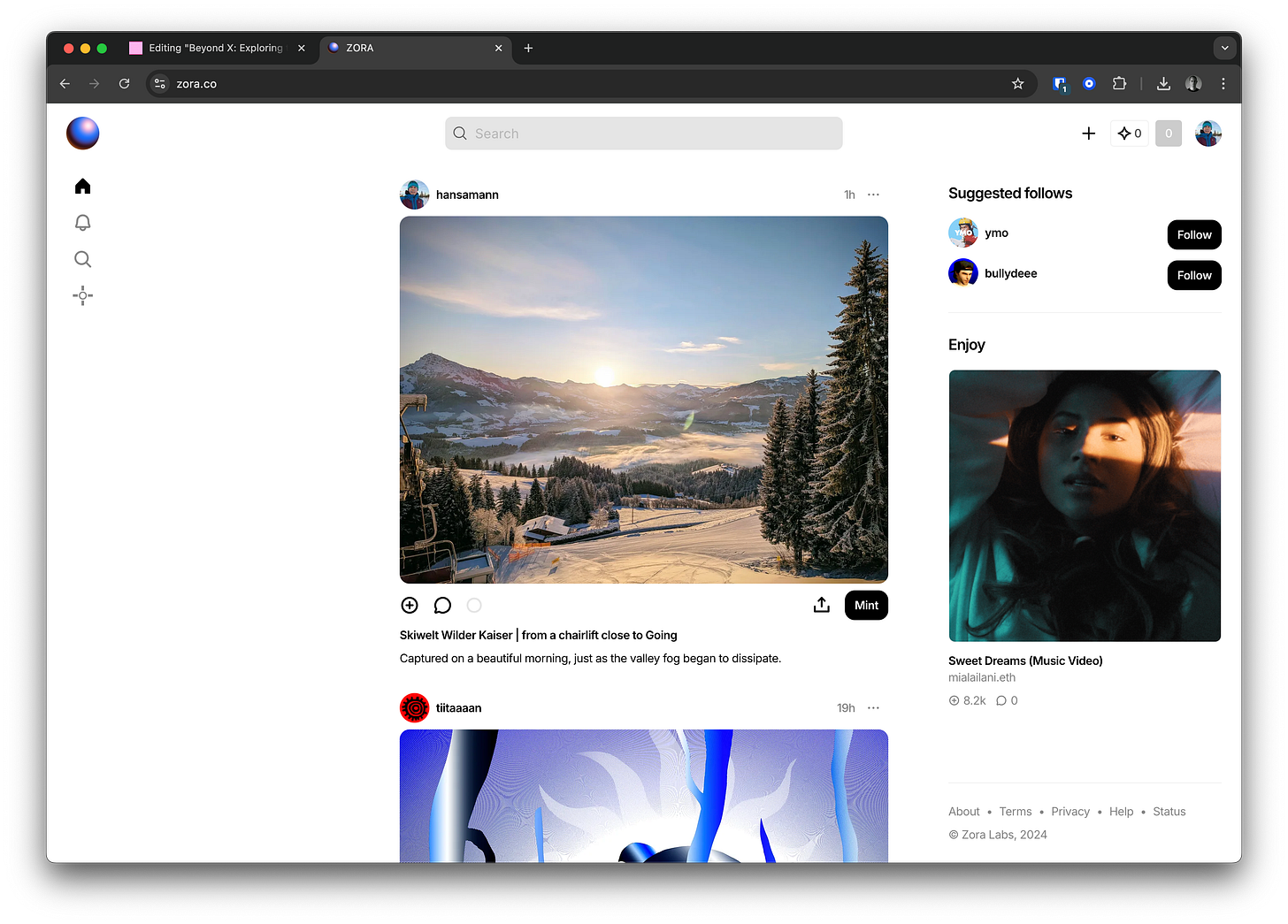
The platform boasts significant user engagement, with numerous high-profile companies like Azuki, Doodles, and Coinbase leveraging Zora for marketing and community building. Its goal is to create a more equitable and rewarding online ecosystem for creators while offering collectors an engaging experience, all while utilizing the security and scalability of the Ethereum network. Zora aims to be a more open and accessible online space.
You can find me here on Zora!
Whoah! That’s a lot?
Don’t worry, as we progress, we’ll be covering each of these non-traditional social media networks in detail. Again, if you want to get most out of this, then I suggest you sign up for each, get a bit of crypto here and there and then also just start to explore! Let’s also have a chat or discussion - I would love to!


